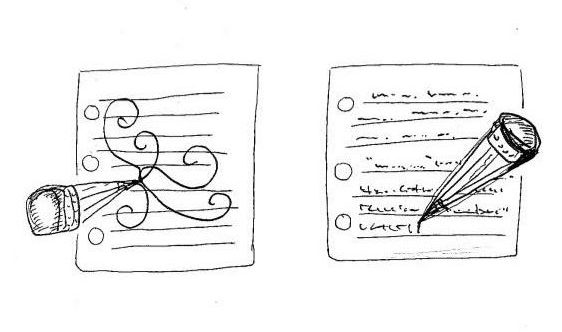Common Core Curriculum Lacks Important Areas for Student Growth
June 19, 2018
Since the 1980s, education in the United States has been driven largely by standards, with government-established academic benchmarks being used to determine student and school proficiency. The early framework of what would later become the Common Core Standards Initiative seemed like the most logical course of action; amidst decreased student performance nationwide, standards designed to guarantee a high school graduate’s proficiency were slated to “trickle down” to lower grades, alongside regular standardized tests.
In an interconnected society where widespread management is possible, such government control seems natural, and with the No Child Left Behind Act of 2001, Washington hoped to combat what many saw to be a widespread disorganization of the American education system and an increase in the achievement gap. But such interventions slowly backfired, ultimately due to excessive standard-based tests and algorithms that transformed the student learning experience into something impersonal, inorganic, and at times nonsensical.
Common Core’s educational interventions are rigorous enough, but the fact remains that, for many years, they taught students the bare minimum. Children are able to comprehend math and writing, but only pertaining to very specific state standards—and on a basic level at that. There is little room for student creativity; not only does the Common Core ignore “outside of the box” thinking, but it punishes teachers for not meeting the standards as well—once again under the guise of healing failed school districts. School staff are evaluated based on the success of their students in many cases, despite the fact that on-the-job training lectures prove largely ineffective; though Boston alone spent $5.5 million on professional development in 2014, teachers and experts agreed that “remedial” training does little to resolve issues with the achievement gap.
The specific standards of Common Core focus largely on certain topic areas that educational experts assume will be most useful to students in the future, effectively making choices for them regarding post-secondary educational opportunities and job prospects. The 11th grade English Language Arts and Literacy standards, for instance, place overwhelming emphasis on research and argumentative writing, leaving students without proficiency in “nonessential” areas like creative writing and linguistics.
The Massachusetts English standards call for students to be able to “write arguments (e.g. essays, letters to the editor, and advocacy speeches) to support claims in an analysis of substantive topics or texts, using valid reasoning and relevant and sufficient evidence” and “write informative/explanatory texts to examine and convey complex ideas, concepts, and information clearly and accurately through the effective selection, organization, and analysis of content.” In these standards, there is no mention of fiction writing, imagination, or the development of ideas that arguably make reading and writing such a uniquely human ability. If anything, these standards reduce writing to something mathematical, based around rubrics, tables, and organizational diagrams. In fact, a student’s ability to “Write routinely over extended time frames for a range of tasks, purposes, and audiences” is valued more than their ability to synthesize new ideas and develop complex, on-the-spot narratives.
Common Core mathematics attempts to resolve increased comprehension issues with higher-level math by introducing it at an earlier level. First grade standards call for working knowledge of “operations and algebraic thinking,” and second graders begin to learn place value and telling time on analog clocks—concepts that were originally introduced to third graders through 2009. This is an adjusted introduction timeline, but at an age when some children struggle with numbers.
While a standardization of the American educational system certainly takes steps in the right direction in terms of measuring student ability on certain life skills, the current approach is far too removed from the actual learning process; it places too much of a focus on doing the one thing that will make a school look good, high test performance, rather than a student’s actual progress and originality.











